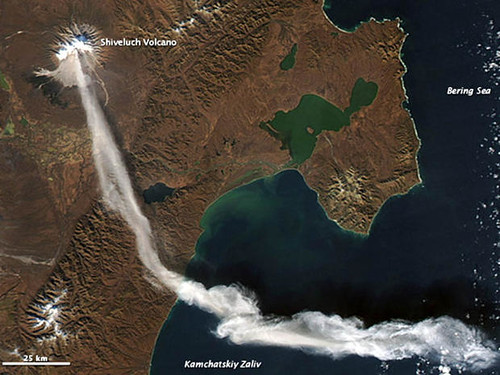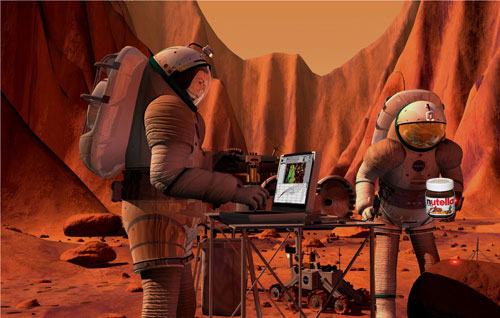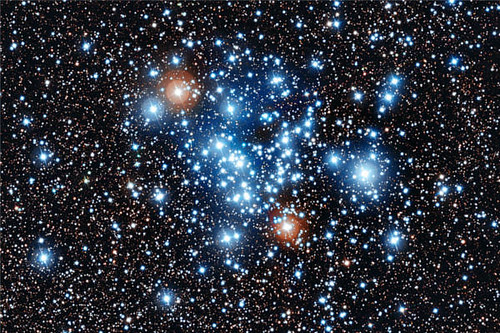GPS shoes to be commercially available in the U.K and Ireland, enabling tracking of wandering Alzheimer’s patients who wear them.
[SatNews – 10/12/2012]
The Season of Bulgarian TV Shows II from Martin Simeonov on Vimeo.
Intelsat gets agreements with two Bulgarian media companies for transponder services to enable digital terrestrial television and distribution of HD programming.
[SatNews – 10/12/2012]
B612 Foundation Sentinel Special Review Team concludes that the Sentinel Mission implementation plans and mission design and will lead to successful Sentinel mission to find and track Near Earth Asteroids.
[Satellite Today – 10/12/2012]
SpaceX Dragon loses Orbcomm satellite on way to Space Station.
[NewScientist – 10/11/2012]
Astrium successfully completes ASTRA 2F testing in orbit and turns over control to SES.
[SatNews – 10/11/2012]
Boeing is selected by SES S.A. to build SES-9 Ku-band satellite for DTH to Asia and Indonesia.
[Space Daily – 10/11/2012]
Eutelsat chooses Thales Alenia Space to build the EUTELSAT 8 West B satellite for broadcast over the Middle East and North Africa.
[herald online – 10/11/2012]
Components for fourth, fifth, and sixth Soyuz launches from French Guiana have arrived at the Spaceport.
[SatNews – 10/11/2012]
Avanti’s $25 million operating loss sends shares down.
[Space News – 10/11/2012]
Russian Federation approves use of Iridium service throughout its territory.
[SatNews – 10/11/2012]
Marlink commits to completing a maritime VSAT installation within 24 hours.
[SatNews – 10/11/2012]
DigitalGlobe gets USGIF Industry Intelligence Award for its work with Satellite Sentinel Project, monitoring human rights violations in Sudan and South Sudan using satellite imagery.
[SatNews – 10/11/2012]
Air Force Space Command commander order Accident Investigation Board to investigate why a Delta IV RL-10B-2 upper stage engine did not perform as expected, even though the GPS IIF satellite was successfully deployed into orbit.
[SatNews – 10/11/2012]
Ariane 5 VA210 flight to orbit EUTELSAT 21B for Eutelsat and Star One C3 for Brazil in November; Soyuz Flight VS03 scheduled for launch October 12 with two European Space Agency GPS satellites.
[Space Ref – 10/10/2012]
Avanti announces that HYLAS 2 is now fully operational and providing coverage across Africa, Caucasia, and the Middle East.
[SatNews – 10/10/2012]
EADS and BAE Systems terminate merger discussions on heels of discussions with several governments about their issues with the merger.
[SatNews – 10/10/2012]
Australian company EM Solutions wins tender with Tokyo based Jepico Corporation to provide Ka-band Satellite on the Move (SOTM) platform to Japanese Government’s National Institute of Information and Communications Technology.
[SatNews – 10/10/2012]
Azerbaijani Deputy Communications and IT Minister says first Azerbaijani telecommunications satellite Azerspace will be launched in January 2013.
[Trend – 10/09/2012]
ATK gets $50M NASA contract to complete engineering development and risk reduction tests as part of the Advanced Concept Booster Development for the Space Launch System.
[SatNews – 10/09/2012]
Beam Communications installs Inmarsat products IsatDock Pro at Russian Antarctic Polar Station.
[herald online – 10/09/2012]
GeoEye is connected to additional government networks through the National Geospatial-Intelligence Agency.
[SatNews – 10/09/2012]

Hughes signs 10-year smart grid satellite connectivity deal with Emtele of Finland.
[Satellite Today – 10/09/2012]
Inmarsat signs long-term alliance with Cisco, enabling it to deliver advanced services over Inmarsat’s new high-throughput satellite broadband network, Global Xpress.
[Market Watch – 10/08/2012]
Indian Space Research Organization plans to launch 58 space missions, among them 33 satellites, by 2017.
[Satellite Today – 10/08/2012]
Inmarsat signs master distribution agreement with Honeywell for GX Aviation services, to bring the service to the business aviation market.
[SatNews – 10/08/2012]
Space Systems/Loral to build EchoStar 8 for Dish Network.
[Satellite Today – 10/08/2012]
New ESA project led by Irish industry puts satellite data to use for monitoring quality of coastal water.
[SatNews – 10/08/2012]
NASA plans space network upgrade for Goddard Space Flight Center to accommodate third generation Tracking and Data Relay Satellites, with launch of TDRS-K scheduled for December.
[Satellite Today – 10/08/2012]

NASA’s Terra satellite observes plume cause by eruption of Shiveluch volcano on Russia’s Kamchatka Peninsula.
[SatNews – 10/08/2012]
Two TV market studies show increasing IPTV effect on traditional video, giving satellite TV providers something to think about.
[Satellite Today – 10/08/2012]
NASA TDRS-K satellite under final system checks by Boeing in preparation for December launch.
[phys.org – 10/06/2012]

FCC lets access rules expire that required cable companies to sell local content like sports channels to satellite TV providers.
[Wall Street Journal – 10/05/2012]
Race for gigabit satellite throughput explored in WTA report, “Teleports in a Gigabit World.”
[World Teleport Site – October, 2012]
Satellite industry girds for another likely spectrum battle in 2015.
[Satellite Today – 10/01/2012]
WBMSAT satellite communications consulting services









